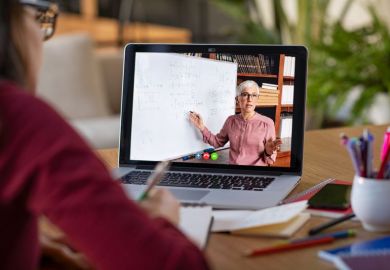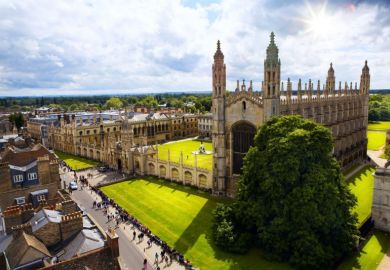For the past 60 years, US universities have basically used a simple production model: offer students access to learning in groups, at set times, through common formats, in pre-determined places and sequence. Currently the size of the group varies but in leading universities, classes of 20 or fewer students are common, and most classes have fewer than 50 students.
But few classrooms would meet the social distancing requirements that we have become familiar with, especially classes conducted in laboratories or offering lots of group work. If we are to offer face-to-face classes in the next academic year, the public health practices that should suppress infection rates will lead to different learning strategies.
This redesign task should engage all members of the academic community. And as those members will bring different perspectives, the leadership challenge is knitting them together in a way that respects their underpinning core values and principles, and produces sets of learning programmes that have meaning and value for students.
It is no easy task. Academicians rightly remind us of the importance of critical thinking, logic and problem-solving and the enduring value of certain foundational disciplines. Learning theorists argue for maximising opportunities to learn and timely feedback.
Our colleagues charged with ensuring fiscal stability start with fixed costs, 75 per cent of which is salary and benefits, and calculate the tuition income needed to break even. Then they factor in constraints – one of which is the reduced capacity of our existing physical campuses to host face-to-face classes as acceptable occupancy limits decrease.
The technology mavens would have us all move online, reminding us that there are many more options than the mass online content heavy lecture, or the Celebrity Squares seminar offered on Zoom and Blue Jeans. This approach avoids the physical infrastructure and personal space constraints and makes it easier to reach geographically distant students and those at risk because of underlying health conditions.
But not all faculty are ready to move to a fully digital classroom and not all students have the connectivity and home conditions that make online materials and interactions accessible. And not all colleges have the information technology needed to underpin full digital delivery.
Be it online or in-person intellectual engagement, interaction and debate between peers, small group discussions and formal presentations that are critiqued and evaluated – productive learning hinges on these key elements. The timeliness of classroom exchanges, the sooner a learner can receive feedback, and the greater the number of responses all add to the effectiveness of learning and deepen the stock of human capital our students develop.
Having a shared physical presence diversifies the modes of communication open to learners and teachers. The subtleties and nuances of tone, look and non-verbal cues that go with the spoken word enrich learning opportunities and help build communities where members learn with and from each other. Maximising these opportunities for interaction between individuals and groups needs to be a lodestar in designing learning programmes in socially distanced environments
But we also need to respect the aspirations and expectations of students that go far past academic life. Our undergraduates are looking forward to a rich and diverse co-curricular experience that has social, political and cultural dimensions.
The social capital that is one of the enduring legacies of university life is not just formed in the classrooms, it is shaped by membership of clubs and societies, by the chance encounters in coffee queues and sports and cultural events.
There are more than 600 formal student organisations at the University of Pennsylvania, for example. They range from the Alexander Hamilton group which is interested in foreign policy and national security to the Yalla Middle East Dance and Drum group which celebrates a rich cultural tradition.
Student activities are not all inward looking. The West Philadelphia Tutoring project links students with local public-school children with the aim of improving literacy outcomes. These activities develop leadership skills, foster notions of tolerance and service to others and build lasting relationships and support networks. They add to the individual’s social capital and to the nation’s common good.
We need to create times and spaces, real and virtual, for these networking opportunities and to help our students grow and develop; to delineate identities and form relationships in the post-pandemic higher education environment.
How well we take on this task of redesigning and refining our learning programmes while maintaining opportunities for engagement in the classroom and in the wider community will be a test of our stewardship of the university, one of the enduring institutions in modern history.
Alan Ruby is a senior fellow in the Alliance for Higher Education and Democracy and director of the global engagement office in the Graduate School of Education at the University of Pennsylvania.
Register to continue
Why register?
- Registration is free and only takes a moment
- Once registered, you can read 3 articles a month
- Sign up for our newsletter
Subscribe
Or subscribe for unlimited access to:
- Unlimited access to news, views, insights & reviews
- Digital editions
- Digital access to THE’s university and college rankings analysis
Already registered or a current subscriber?








